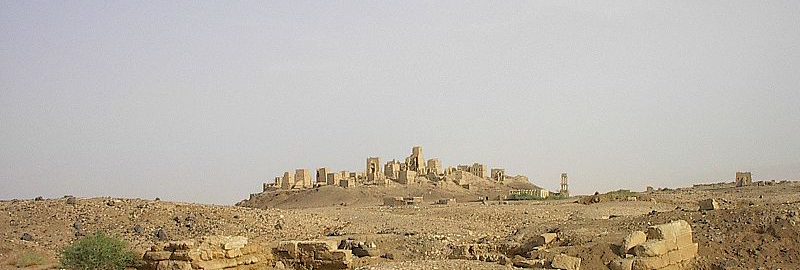With the addition of Egypt to the Roman Empire in 30 BCE, Augustus saw a number of problems related to the new province. Regular invasions by the Kushites began from the south, and Arab pirates lurked from the side of the Red Sea. In addition, due to the commercial dominance of the Himyarites and Sabaians in the Bab el Manbed strait, the Romans had a difficult opportunity to cruise on this important route to India.
The Roman authorities could not afford to downplay the threat, so the new prefect of Egypt, G. Emilius Gallus decided to make a risky and unprecedented in Roman history, a trip to Arabia Felix to end his domination trade for Arabs in the Red Sea. Gallus gathered contingents of 10,000 Roman legionaries stationed in Egypt, 500 Jews and 1,000 Nabataeans of Petra under the command of Syllaeus at the port of Cleopatris.
A military expedition started in 25 BCE from Kleopatris to the south, but as a result of numerous problems and the loss of many ships, the Gallus fleet had to land in the port of Leuke Kome (near El Haura). Gallus then spent the entire summer and winter there, previously planning to sail south of Arabia by ships, but the loss of ships made the voyage impossible, forcing him to decide to continue the rest of the route overland.
Early 24 BCE the Roman army headed south, using camels to transport water. The Romans wandered for days in the deserted desert. After a tiring sand road, Gallus reached the irrigated and fertile land of Negrana (probably today Nejran), where he began to besiege her city. The Romans stormed and captured the city. Roman troops then reached a certain river, where Arab troops blocked their way. Gallus had a great victory in the battle, killing 10,000 Arab fighters and losing only a few on his side because the enemy was very poorly armed. Arab warriors did not realize the high military level of the Roman army.
Gallus then captured two important trading centers, Asca and Athrula, where he built warehouses to store supplies and established a Roman garrison. The Roman army then headed for the country of the Rammanite tribe, who, under the leadership of King Ilisaros, hid in their capital Marsiaby (today Mar’ib). Gallus began to besiege the city, but due to the lack of water, he had to withdraw from the blockade after 6 days. In March, while Gallus was in the country of the Rammanites, he was informed that he was only two days from the wonderful land of perfume, Hadramaut. Gallus decided to go there because he expected that it was there that the abode of the Sabeans and the Himyarites were located. Instead of reaching the south coast of Arabia, however, he wandered 6 months in the desert due to the treachery of guides and Syllaeus. Eventually, he gave up the tour and returned to Negrana. Gallus finally gave up further south and marched north through the city of Hepta Phreatae – the “Seven Springs”, finally reaching the village of Egra on the Red Sea. There he relocated his tired and depleted troops to the newly built ships on which he sailed to Myos Hormos in Egypt, finally arriving at the end of 24 BCE. to Alexandria.
The Gallus expedition did not limit the trade monopoly of the Himyarites and the Sabeans, because due to poor knowledge of the interior of Arabia, he was unable to locate his position well. As a result, the possessions of Arab merchants on the coast, mainly the city of Aden (destroyed by the Romans in 1 BCE), were not conquered, and the domination of the Sabeans and Himyarites continued. However, it was the most daring expedition of Roman troops on the Arabian Peninsula, which made it possible to get to know the desert areas on the other side of the Red Sea better.







